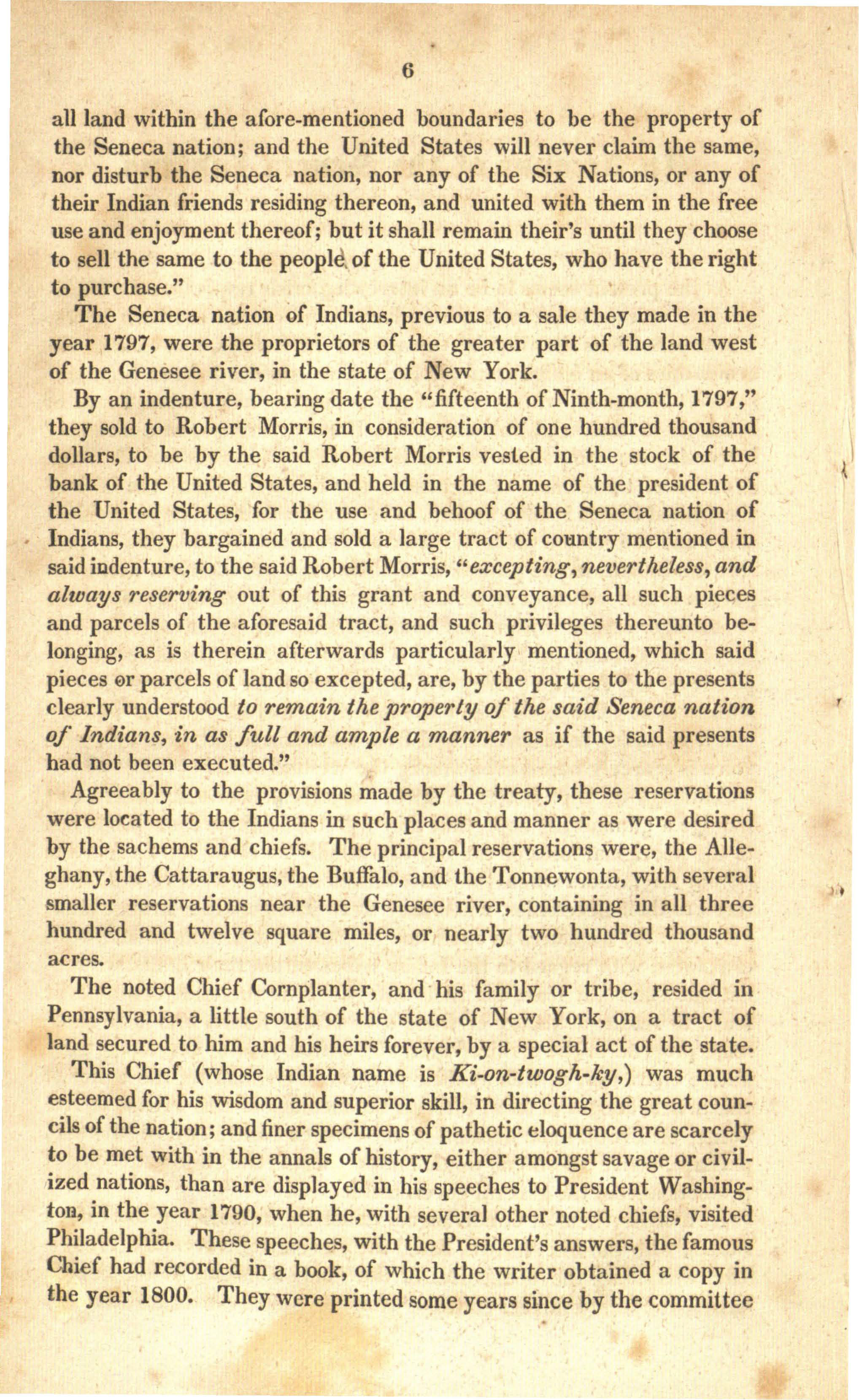all land within the afore-mentioned
boundaries to be the property of
the Seneca
nation
nor disturb the Seneca nation
their Indian friends residing thereon, and united with them in the free
use and enjoyment thereof; but it shall remain their's until they choose
to sell the same to the people of the United States, who have the right
to purchase.
The Seneca nation
year 1797, were the proprietors of the greater part of the land west
of the Genesee river, in the state of New York.
By an indenture, bearing date the fifteenth of
Ninth-month, 1797,
they sold to Robert
Morris
dollars, to be by the said Robert Morris vested in the stock of the
bank of the United States, and held in the name of the president of
the United States, for the use and behoof of the Seneca nation
Indians, they bargained and sold a large tract of cuintry mentioned in
said indenture, to the said Robert Morris, excepting, nevertheless, and
always reserving out of this grant and conveyance, all such pieces
and parcels of the aforesaid tract, and such privileges thereunto be-
longing, as is therein afterwards particularly mentioned, which said
pieces or parcels of land so excepted, are, by the parties to the presents
clearly understood to remain the property of the said Seneca nation
of Indians, in as full and ample a manner as if the said presents
had not been executed.
Agreeably to the provisions made by the treaty, these reservations
were
located to the Indians in such places and manner as were desired
by the
sachems and chiefs. The principal reservations were, the Alle-
ghany
smaller reservations near the Genesee river, containing in all three
hundred and twelve square miles, or nearly two hundred thousand
acres.
The noted Chief Cornplanter
Pennsylvania, a little south of the state of New York, on a tract of
land secured to him and his heirs forever, by a special act of the state.
This Chief (whose Indian name is Ki-on-twogh-ky,) was much
esteemed for his
wisdom and superior skill, in directing the great coun-
cils of the nation;
and finer specimens of pathetic eloquence are scarcely
to be met with in
the annals of history, either amongst savage or civil-
ized nations, than
are displayed in his speeches to President Washing-
ton
Philadelphia
Chief had recorded in a book, of which the writer obtained a copy in
the year 1800. They were printed some years since by the committee

